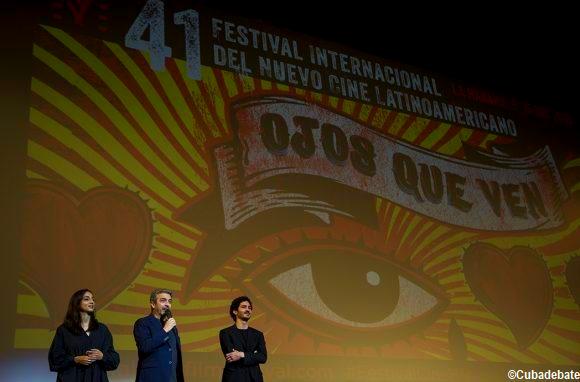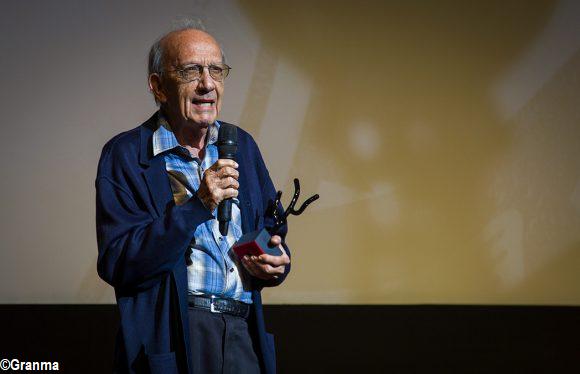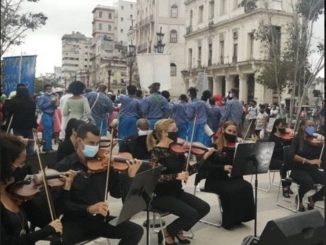
From December 5 to 15, 2019, Havana hosted the seventh continental art with the exhibition of 300 films from 37 countries, headed by Argentina and Brazil and with audiovisuals from other parts of the world, such as Spain, France, Germany and Great Britain. The creation of an independent film development fund in Cuba was announced during the International Festival of New Latin American Cinema in Havana.

A story about a mature woman and her 14-year-old sleepwalker daughter, within a ritualistic, matriarchal and inbred family won the Coral Prize for the best work of fiction at the 41st Festival Internacional del Nuevo Cine Latinoamericano de La Habana – International Festival of New Latin American Cinema in Havana.
“Los sonámbulos”, Argentinian-Uruguayan co-production, by Paula Hernández, received the most important award of the Havana film event which brings together the most outstanding Latin American and Caribbean cinema in the Cuban capital every year.
Together with “Los sonámbulos” were awarded the Chilean film “Algunas bestias”, by Jorge Riquelme Serrano; the French-Guatemalan co-production “La Llorona”, by Jayro Bustamante; and the Cuban film “Agosto”, by Armando Capo, among other sections and genres of the industry.
For 10 days, from December 5 to 15, Havana hosted the seventh continental art with the exhibition of 300 films from 37 countries, headed by Argentina and Brazil and with audiovisuals from other parts of the world, such as Spain, France, Germany and Great Britain.
Meanwhile, in competition for the Coral Prize, 21 fiction feature films, 18 first feature films, 21 documentaries (feature films), 10 short and medium-length films, 23 animated films, 25 unpublished scripts and 30 posters were presented.
The jury for the prizes were composed of 23 filmmakers, critics, writers and producers from seven Latin American countries and Spain to select the best films, unpublished scripts, documentaries, animated shorts and posters in competition.

40 years of Latin American and Caribbean reality
The festival raised its curtains for the forty-first time under the same founding precepts of continuing to present the great themes of the Latin American reality, according to Iván Giroud’s statements, president of the event.
In fact, most of the achievements addressed the current Latin American reality with themes such as sexual diversity, native peoples, the current situation in nations such as Bolivia, and entertainment in the region and growing influence of fundamentalist religions.
The edition was dedicated to celebrating the centenary of the birth of one of the outstanding figures in Latin American cinema, the Cuban documentary filmmaker Santiago Álvarez, who was paid homage with a colloquium and a great exhibition.
Álvarez (1919-1998), named father of the Cuban documentary, has in its production the creation of the Noticiero Icaic Latinoamericano, with nearly 600 editions, and about 120 documentaries in 35 millimetres and 12 videos on betacam support.
In addition, the event celebrated the 60th anniversary of the founding of the Instituto Cubano del Arte e Industria Cinematográficos – Cuban Institute of Cinematographic Art and Industry (Icaic) and presented its Honor Corals to the renowned Cuban director Manuel Pérez, founder of the Icaic, and to the producer Lita Stantic (1942), icon of the New Argentinian cinema of the 1990s.
Stantic is one of the most renowned Argentinian producers, whose work left memorable traces on films such as “Camila” (1984) and “Yo, la peor de todas” (1990), both by María Luisa Bemberg; “Un oso rojo”, by Israel Adrián Caetano (2002); and “Cordero de Dios” (2008), by Lucía Cedrón, to give just a sample from a fairly large inventory.
Meanwhile, the Galas section offered works of great popularity and some already awarded at international events such as the feature films “Parásitos”, by Bong Joon-Ho (South Korea, nominated for the Oscars); “Ema”, by Pablo Larraín (Chile); “Chicuarotes”, by Gael García Bernal (Mexico); and “La Red avispa”, by French filmmaker Olivier Assayas.

The most popular festival on the planet
The first day, with the traditional opening gala at the Karl Marx Theatre, was dedicated to the premiere in Cuba of “La odisea de los giles”, an Argentinian film, which was presented by two of its protagonists: Ricardo and Chino Darín.
Father and son are among the most famous actors in the continent. Ricardo won a Goya Award in 2015, became the first Latin American to receive the Donostia Award for his career at the San Sebastian Festival in Spain, and starred in three Oscar-nominated films.
In statements issued to the media, Darín father said that Havana Festival is the most popular festival on the planet. “I’ve been saying for many years that this is the most popular festival on the planet; the greed that the Cuban people have for watching films is something that doesn’t exist anywhere else”, said the protagonist of films such as “El secreto de sus ojos” (2009 ), “Un cuento chino” (2011), and “Relatos salvajes” (2014), among many others.
“There is something I really like about Latin American cinema in general, the courage to tell the simplest stories, that do not necessarily feed on the spectacular. They stand out around the world hence, many Latin American productions catch the attention of major production companies, it is something we should be proud of and defend so that we don’t let it intoxicate our raw material”, Darin concluded.

A new independent film development fund in Cuba
For its part, Chino said that cinema is a collective construction that requires energy, desire and confrontation between various points of view. “About cinema, Stantic also shared her views at the Hotel Nacional de Cuba, venue of the festival. Cinema must tell important and necessary things, talk about what is happening to us and somehow serve to reflect”, said the Cuban producer who became a fan of Cuban cinema since she saw “Lucía”, “Memorias del subdesarrollo”, “79 primaveras”, , films that – she said – were fundamental to her.
Among screenings, conferences, meetings and awards, the festival also transcended the creation of a new fund for independent film production in Cuba.
The initiative – a long-awaited desire by Cuban filmmakers – will specify the set of legal rules to establish the creation of the Registry of the independent film creator, the Production assistance Office and the Cuban Film Development Fund.
The Fund will be financed from the state budget, in addition, legal persons and national or foreign entities could make their contribution; as long as it will consider minority co-productions that prioritize the use of monetary resources in the national territory.
The initiative will admit five modalities of audiovisual creation such as production, project development, first feature films, postproduction or support for distribution; and the proposals will be commissioned without distinction of footage.
The Fund will support up to 60 percent of the financing and, in the case of first feature films, could support 100 percent of the amount requested for the conception of the audiovisual material. With this good news, the cinematographic event, which filled the cinemas of the Vedado capitalino with spectators said goodbye and it said goodbye until December 2020, where the reality told on the screen will gather again the dreams and the unity of an entire continent.




